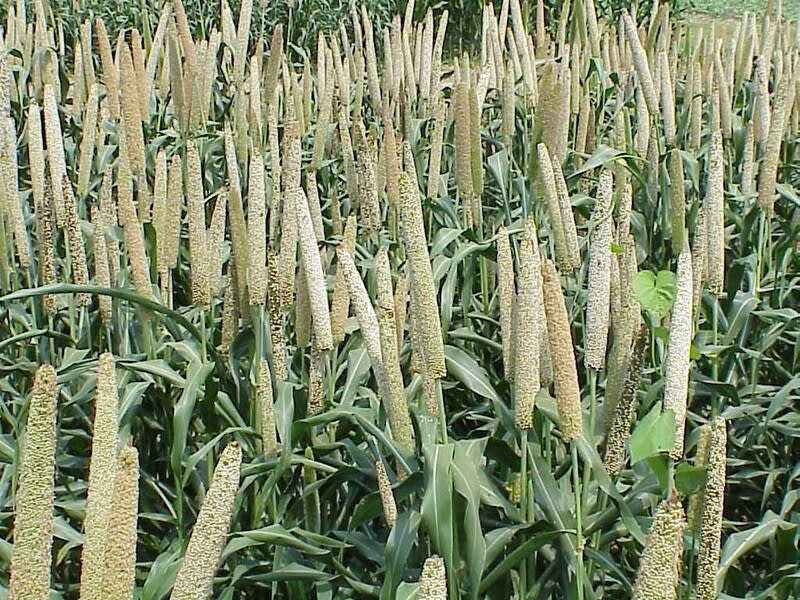
🌿 Morphology
🌞 Growing conditions
🌍 Origin and family
🌾 Uses
Warning: Despite the care taken in writing this sheet, it is essential to cross-reference sources before using or consuming any plant. When in doubt, consult a qualified professional
Permaculture uses
Pearl millet is primarily used as a grain crop for human consumption and animal feed. It's highly drought-tolerant, making it suitable for arid and semi-arid permaculture systems. The stalks can be used as mulch or for building materials. Certain cultivars are bred for forage. It improves soil health and can act as a windbreak.
Permapeople description
Pennisetum glaucum (pearl millet) is a widely grown cereal crop in Africa and Asia, known for its drought tolerance and nutritious grains.
Botanical description
Pennisetum glaucum is a tall, annual grass belonging to the Poaceae family. It typically grows to a height of 1-4 meters. The plant has a deep root system, contributing to its drought resistance. The inflorescence is a dense, cylindrical spike-like panicle, bearing numerous small spikelets containing the grains. The grains are round to oval in shape and vary in color from white to gray to brown. Leaves are long and linear, resembling other grass species. Stems are erect and sturdy.
Companion planting
Pearl millet can be grown in association with legumes like cowpea and groundnut, which help fix nitrogen in the soil. It can also be intercropped with sorghum or maize. Avoid planting near plants susceptible to similar pests and diseases.
Propagation methods
Pearl millet is primarily propagated by sowing seeds directly into the ground. Broadcasting and row planting are common methods. Seedlings can also be transplanted, although direct seeding is more typical. The seed should be planted at a depth of 1-2 inches.
History and traditions
Pearl millet has been cultivated in Africa and India for thousands of years. It's a staple food in many arid and semi-arid regions, particularly in West Africa and South Asia. Traditionally, it's been used to make porridge, bread, and beer. It has cultural significance in various communities, often associated with festivals and ceremonies.
Usage calendar
Sowing: Spring/Early Summer (after frost). Flowering: Summer. Harvesting: Late Summer/Early Autumn. Specific timing depends on local climate and cultivar.
